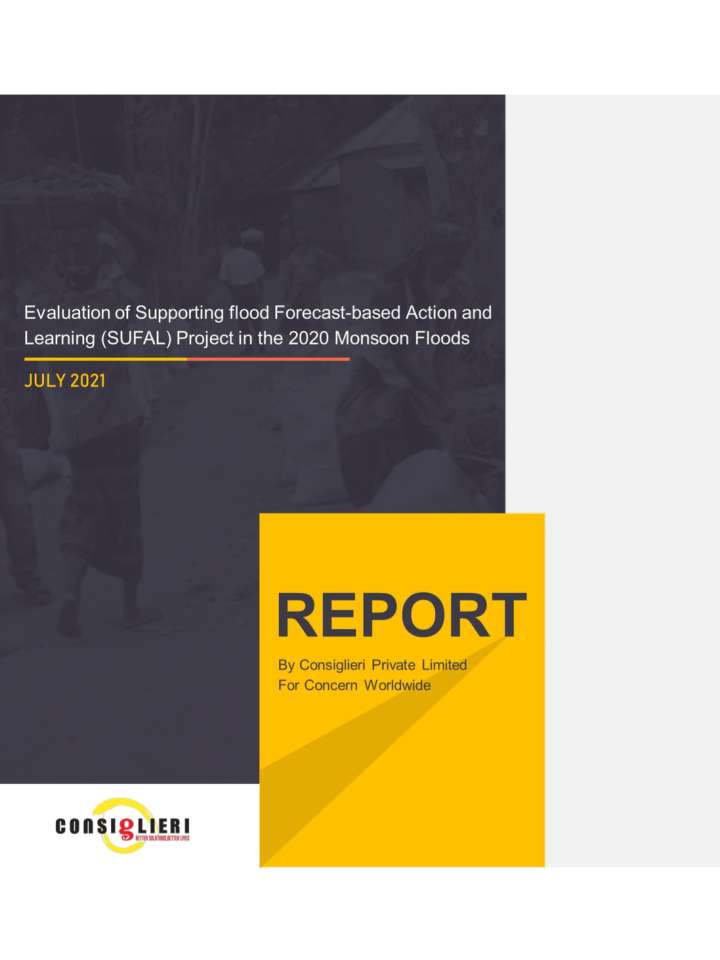Supporting flood Forecast-based Action and Learning (SUFAL) Project in the 2020 monsoon floods
‘Supporting flood Forecast-based Action and Learning’ (SUFAL) project was designed to contribute to reducing the adverse impacts of the increasing frequency of catastrophic flooding on the vulnerable and poor communities through Forecast-based Action (FbA). The project was funded by The Directorate-General for European Civil Protection and Humanitarian Aid Operations (ECHO) and was implemented through a consortium led by CARE Bangladesh, with Concern Worldwide, Islamic Relief and Regional Integrated Multi-Hazard Early Warning System for Africa and Asia (RIMES). The project was implemented in three northern districts of Bangladesh: Jamalpur, Gaibandha, and Kurigram. FbA contributed to disseminating Flood Early Warning messages with a lead time of 10 – 15 days with timely and accurate weather forecast information, while and it also helping to identify potential flooding areas.
It was found through the study that less people in treatment group experienced damages compared to control households, treatment households saved more resources in 2020 than control households, and the average monetary values of assets saved by treatment group in 2020 were higher compared to the control group households. Due to the drawn-out duration and intensity of the flood in 2020, respondents reported that they were not able to prevent more damages although they took more early actions. Besides, treatment areas were the most flood affected areas. The early messages had helped the community to prevent damage to their assets and livelihoods. The percentage of damage prevented in agricultural sector for the treatment group had increased to 28% since the flood of 2019. The damage prevented in fisheries had increased significantly by 18 percent in 2020 in compared to that of 2019. The death of family members from waterborne diseases had decreased (except female members) in comparison to the previous flood in 2019. It is quite evident that the early warning message had enabled the males to take early actions regarding relocation of the vulnerable family members to higher grounds, relative’s houses, or to the shelters. The cash for work modality had also helped the community people to obtain a source of income by working for the embankment, roads, bamboo bridges, etc. Shelter renovations and upgradations reportedly encouraged the community people to evacuate faster. The average amount of loan taken by a treatment respondent and control respondent was found to have been Taka 20,194 and Taka 18,335 respectively. However, post flood loan burden was significantly less for the cash grant recipients (only 32% took loan after flood) as compared to other treatment groups (more than 50% took loan). The cash grants are said to have helped the recipients address their basic needs during the flood and also helped them to some extent to repair their house and pay for livestock treatment after the flood.
Explore further
